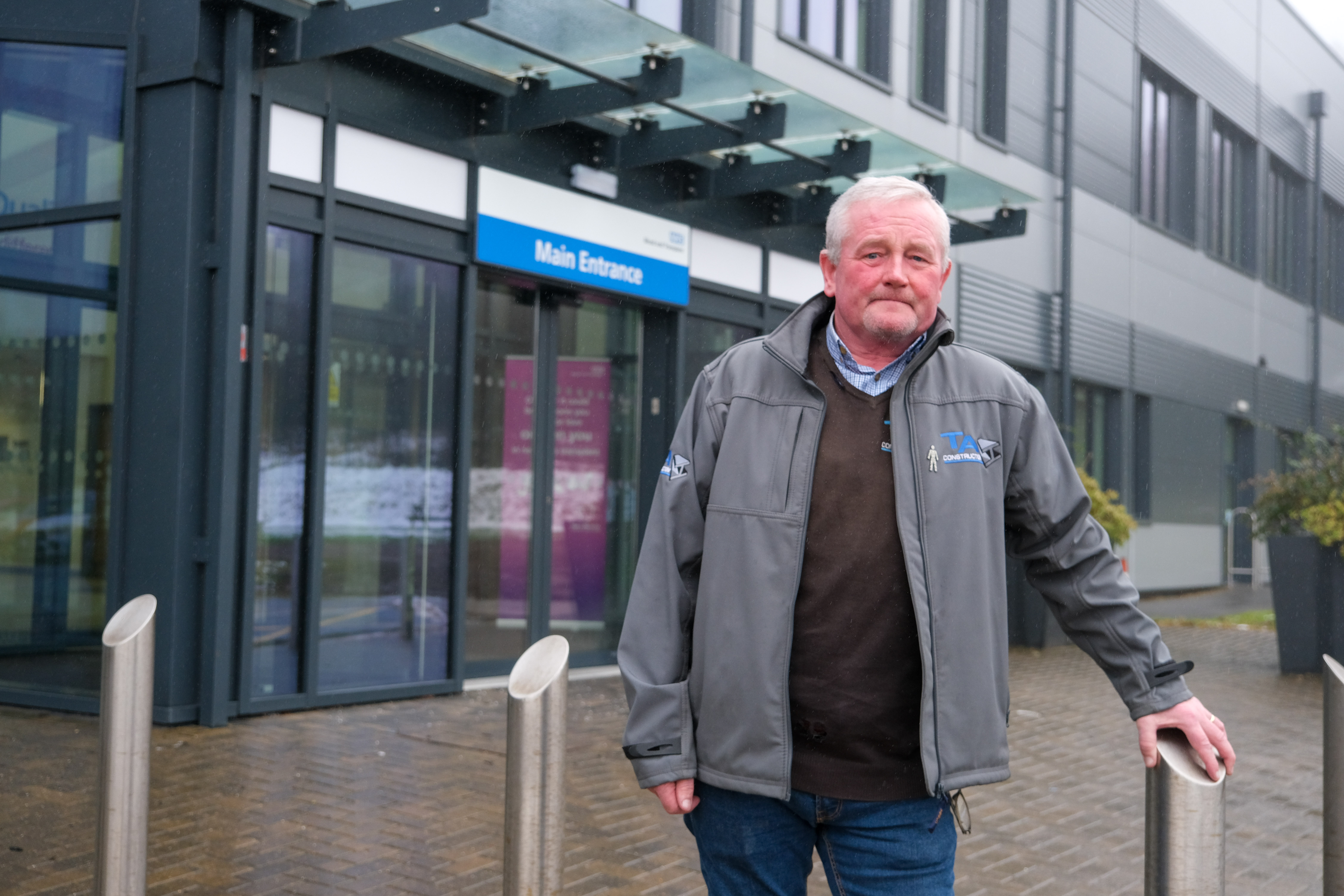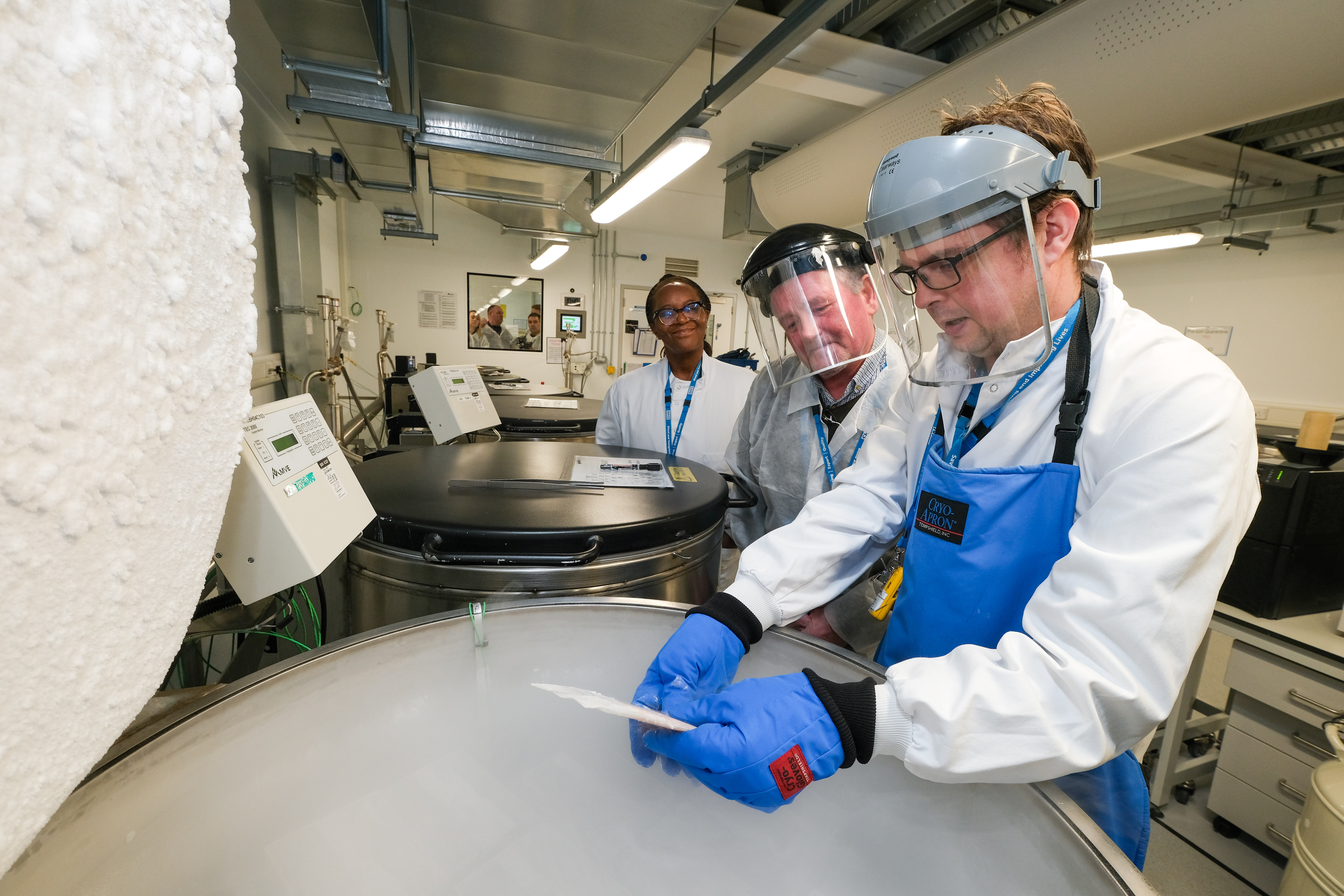You get what you give
When Darren Dowlen helped to build NHS Blood and Transplant’s Barnsley centre in 2018, he couldn’t have predicted that he’d be inside the building one day, looking at the stem cells that would be helping to save his life.
Not just anyone’s stem cells, either: his own.
Located just off the M1, the Barnsley centre was officially opened in 2021 and provides blood and organs to 39 hospitals in the north of England, as well as storing donated stem cells.

Darren, a 58-year-old engineer from Barnsley, was involved in its construction, overseeing the erection of its steel frame. A former blood and stem cell donor, Darren now needs to be treated with chemotherapy after being diagnosed with myeloma.
Myeloma is a type of cancer that affects bone marrow, which is where the body makes stem cells. Stem cells can turn into different types of blood cells – mainly, red blood cells, white blood cells, and platelets.
Although chemotherapy will kill cancer cells, it will also damage Darren’s bone marrow, meaning he is at risk of infections and bleeding.
Stem cell transplants help patients bone marrow to recover. In Darren’s case, though, he will be given the cells he donated in the past.
When I went in to have my cells collected, there were people were just going in to donate. Young people. I thought that was brilliant. Just to help other people out. Absolute magic.
What’s more, Darren was given the opportunity to revisit the Barnsley centre and see his frozen cells in storage. He also met NHS Blood and Transplant staff, including the nurse who attended his stem cell donation, the driver who transported his cells, and the scientists overseeing the unit.
“The visit was so interesting,” he says. “Not many people get that chance. It was unbelievable.
“You could see the outline of the steel frame in the stem cell storage room itself and you can see the frame itself at the entrance.
“And I helped build it.”
As well as being used as part of cancer treatment, stem cell transplants can also treat conditions affecting blood cells, such as sickle cell disorder.
For a patient to receive a stem cell transplant, the British Bone Marrow Registry must first find a matching donor. The match found for Darren’s treatment was his own donation, kept frozen.

Donors can join the register by providing a small sample before giving blood or platelets.
A donor will normally give stem cells in a process similar to blood donation, or less often by donating bone marrow.
The need for stem cells is growing, with an almost 50% rise in collections seen nationally between 2020 and 2023. The British Bone Marrow Registry especially needs men under 40, who are more likely to be able to provider high numbers of healthy stem cells with fewer potential complications, and also black and Asian men and women under 40, due to the shortage of ethnically matched donors for people in those populations.
“More people need to understand how stem cells work,” says Darren. “When I went in to have my cells collected, there were people were just going in to donate. Young people. I thought that was brilliant. Just to help other people out. Absolute magic.
“I want to carry on as long as I can. You don’t realise what you will get in later life.
“The treatment means everything.”
